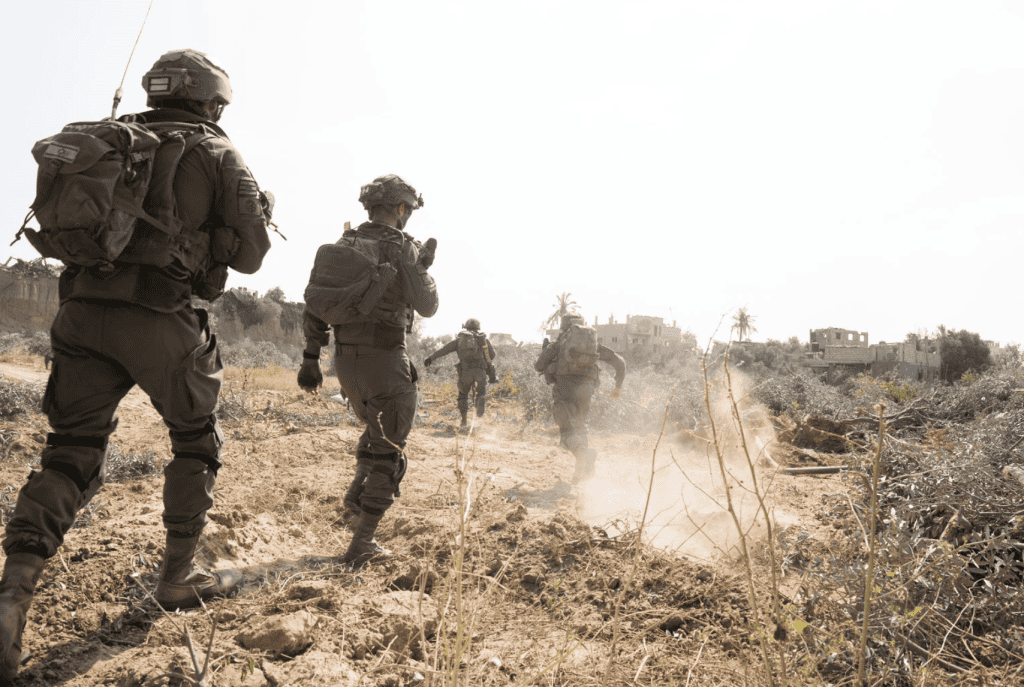
The Israel Defense Forces carried out strikes on 25 targets in Gaza between April 18 and 19, according to the Israel Defense Forces. The airstrikes targeted a variety of sites, most of them defined as “infrastructure” by the IDF. This includes observation posts, launch sites for rockets and other areas. The IDF is focused on continued operations in northern Gaza while it also seeks to increase humanitarian aid delivery to the north. This comes as Gazans seek to return to northern Gaza after six months of war.
On Thursday, April 18, a rocket was fired from Beit Lahia in northern Gaza toward the Israeli city of Ashkelon. This is one of just a few recent rocket attacks from Gaza that has targeted Ashkelon. Several miles north of Gaza, the city was a major target of Hamas rocket fire when the war began on October 7. Hamas fired thousands of rockets in the opening days of the war, but recently its rocket and mortar fire has been reduced to one or two launches a week.
The IDF responded to the rocket fire by striking the area from which the rocket was fired. “Within several minutes, IDF artillery struck the area from which the launch was fired in Beit Lahia, and an IDF aircraft struck a weapons storage facility in the area,” the IDF said.
In addition, IDF troops from the 162nd division, which has controlled northern Gaza since the ground operation began on October 27, continued to carry out raids in Gaza. This reflects the IDF’s current posture, wherein the IDF controls a corridor south of Gaza City and carries out operations into areas around the city and into central Gaza. More than 1,000 terrorists have been eliminated in these operations, the IDF says. Twenty kilometers of tunnels were also uprooted.
The IDF said on April 18 that “soldiers of the 401st Brigade combat team, together with forces of the Yahalom Unit, cleared and destroyed more than 100 terrorist infrastructure sites and eliminated more than 40 terrorists in close quarters combat and airstrikes.” This is supposed to expand control of what Israel is calling the Karni corridor, which is also referred to as the Netzerim corridor. The corridor is controlled by the IDF’s Nahal infantry brigade.
The Israeli forces also carried out a raid on a underground compound that is near Wadi Gaza. Wadi Gaza is one of the main dividing lines between northern and southern Gaza. “During the operation, 17 tunnel shafts were destroyed, including offensive shafts. In addition, the forces located a number of launchers and launching pits used by the terrorist organizations in the Gaza Strip.”
The operations came as Israeli security forces were also able to identify a senior Hamas official named Yussef Rafik Ahmed Shabat. Israel says that he was “responsible for investigations in Hamas’ Internal Security Department in Beit Hanoun.” He served in the area of Beit Hanoun which has been a center of IDF raids in the last weeks. The large number of terrorists found, the rocket launch and the fact that in one case the IDF also struck a vehicle with armed men in it, illustrates how Hamas continues to operate throughout northern Gaza.
At the same time, Israel has sought to increase the amount of humanitarian aid entering Gaza. Aid is now reaching Gaza for the first time from Ashdod port. Israel opened this route in early April. This is in addition to a maritime route from Cyprus that was suspended after an Israeli airstrike killed seven humanitarian aid workers in early April.
Israel’s Coordinator of Government Activities in the Territories Unit (COGAT) has boosted the number of trucks entering Gaza. Most of the trucks enter via the Kerem Shalom crossing near the Egyptian border. Airdrops of aid into Gaza also continue. On April 18, a total of 144 food parcels were airdropped. COGAT says that 700 humanitarian aid trucks are waiting on the Gaza side of the border near Kerem Shalom, with additional trucks heading to northern Gaza. The IDF said that 100 trucks arrived to the north on the night of April 18 and that the World Food Program (WFP) brought 9 trucks from Ashdod port. Some of these are for new bakeries that have opened in Gaza. A new crossing in northern Gaza is facilitating the entry of some trucks. This is important because Israel’s plan to launch an operation against Hamas in southern Gaza requires that many of the civilians who fled there be able to leave before the attack begins.







